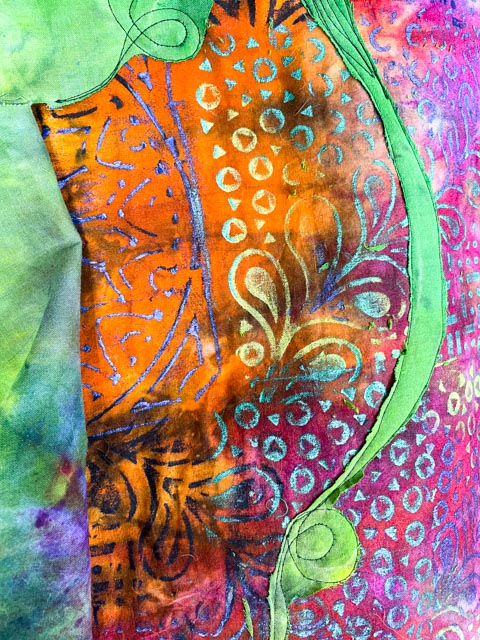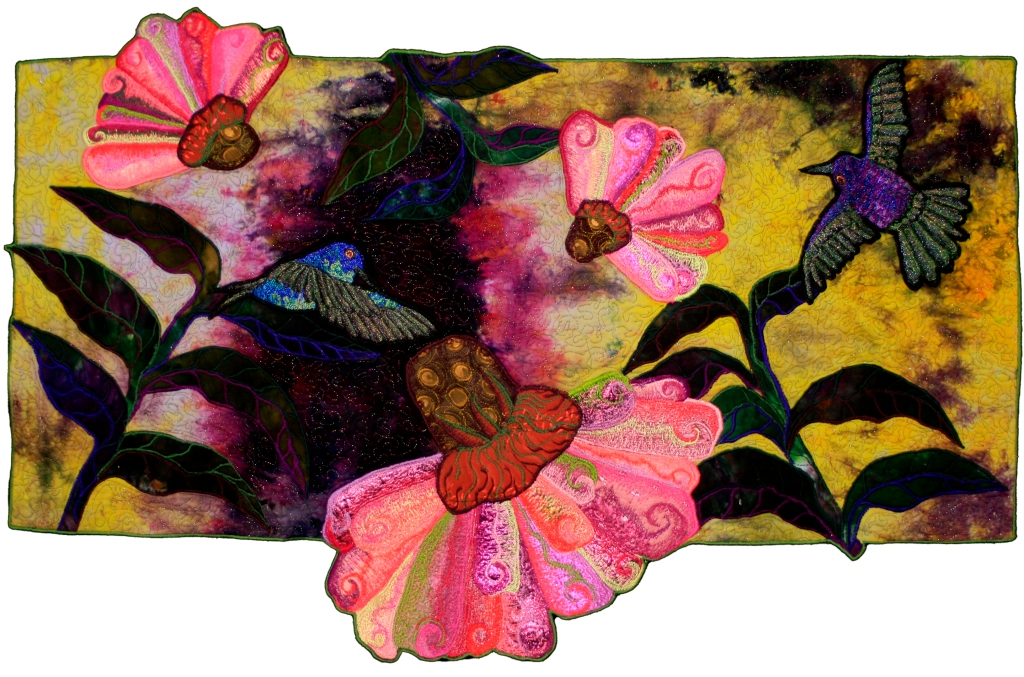
I work a lot with embroidered appliques. These are embroidered separate pieces I can apply to the surface of my piece. Because they’re separate, they don’t distort the piece as much, and they can be moved endlessly until you stitch them down.



I discovered several working hacks for applique rescue doing this. A 2-foot lily pad takes up way too much space to have as a double layer. It’s just too bulky, and I wanted to stitch frogs to the lily pads which would have made a very dense surface.. I’d heard about cutting out behind appliques, but I hadn’t tried it before. It worked quite well. I was able to stitch down my frogs without an extra layer of felt, stabilizer, embroidery, and hand dye. I was worried about the integrity of the piece, but once it was stitched and trimmed, it was quite stable.
This works if you’re sure of what you have designed. What if you stitch it down and change your mind? Artists call this pentimenti. The artist chooses something and changes their mind. On a painting, it would be a layer underneath with different images. On fiber art, it’s a series of small holes where you ripped something out.
This was a week of set backs. I’ve been working on finishing the purple heron. When I get towards the end, I sometimes make decisions I regret.
This happened with my purple heron this week. I was working with some larger lily pads than I usually do, and I put them in first before the heron. In between the heron and the lily pads were the butterflies. When I finally got the heron stitched in, the butterfly was way too close and personal.

Removing an applique is a drastic thing to do. It’s been stitched down with a free-motion zigzag stitch that is quite dense. I’ve done it with a mustache trimmer. I also love my surgical scalpels. That’s what I used here. You can cut through the stitch on the backside. I have a layer of protective felt and stabilizer between that and the front.

But be prepared for holes. I hoped the needle holes would shrink when I steamed the piece. Not enough.

Here’s another rescue. A roll of tape can remove a lot of excess thread after ripping out.

Not to worry about the holes. I got out some left-over spirals and placed them in a design where the hole was. What hole? After that, I replaced my butterfly in a better spot.

Here it is fixed. I need to stipple in the water next.
,Does it happen to me? Of course, it does. Rather regularly. But it isn’t what goes wrong with a piece of art that defines it. It’s what you do after to fix it.




















































































































